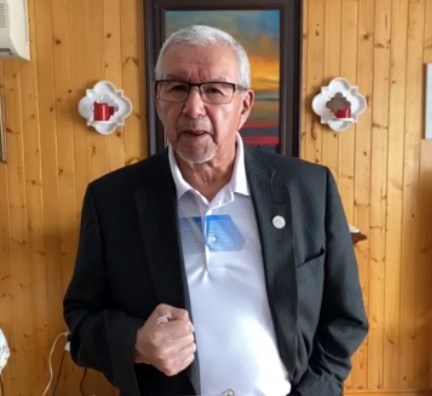Norm Wesley recalls how his father came home very upset one day.
On his trap line, Wesley’s father encountered a logging operation that interfered with his trapping and there was nothing he could do.
For generations, Indigenous people survived off the land and hunting meant everything to them, Wesley said.
“This is something that is really dear to us. We’re still very passionate about hunting,” he explained. “Putting food on the table, putting clothing on our backs, it was survival.”
Wesley also remembers how his father was called to court and was charged for hunting in the Moose River Migratory Bird Sanctuary.
“He was out moose hunting. And the moose ran from the creek, crossed the creek onto the Ship Sands Island,” Wesley said during a virtual presentation hosted by Northern College Wednesday. “He ran and took after the moose and he shot it. He was charged for hunting at the bird sanctuary and he was fined. It was something that he was very, very upset about.”
Born and raised in Moose Factory, Wesley, who is now semi-retired, has worked as a teacher, college dean, First Nations policy advisor as well as a tribal chairman, and has been chief.
More than 150 people tuned in to listen to Wesley’s speech about the history of Treaty 9 and what it means to Indigenous people.
Treaty is something that Indigenous people used to ensure they have a say and their consent is given on various developments, Wesley said.
During the signing of Treaty 9, which was written in English, Indigenous people were told they wouldn’t lose their traditional lands nor their hunting, trapping and fishing rights. Wesley explained the treaty also includes a “taken up clause”, which wasn’t mentioned or explained to Indigenous people, that said the government could use their lands for settlement, lumbering, mining or other purposes.
When the Treaty 9 diary, written by Ontario’s Treaty Commissioner Daniel George MacMartin, was discovered at Queen’s University, Wesley said the document served as a “hammer” that Indigenous communities could use to show that the land still belongs to them. According to the diary, Indigenous people were promised they could hunt and fish wherever they pleased.
Oral promises made during the signing of the treaty are as valid as written promises, said Wesley.
“The written document, the treaty, in our view is not what it is. What our people heard is what the treaty is and we would have this land for our interest and wellbeing once we sign the treaty,” he said.
The partnership between the Moose Cree First Nation and the Ontario Power Generation on the Lower Mattagami River Project is an example of successful negotiations and sustainable development, Wesley said. Under the Amisk-oo-Skow agreement, Moose Cree owns 25 per cent of the project.
Moose Cree is also organizing a trust fund to set the money aside so it can “perpetuate itself” for future generations.
“Our main source of revenue will be from the land. Sustainable development is so important when we negotiate this,” Wesley said.
Some questions asked by the viewers at the end of the presentation included what educational resources were available for non-Indigenous people, whether NioBay Metals’ James Bay Niobium Project was a violation of the treaty rights, and whether treaties were reviewable and if the parties could renegotiate.
In response to the questions from the audience, Wesley recommended reading Treaty No.9: Making the Agreement to Share the Land in Far, written by John Long, and Inconvenient Indian by Thomas King.
Regarding the proposed niobium mining project on the North French River, Wesley said if the company goes ahead but has First Nations’ permission and consent, then it doesn’t violate the treaty rights. With this project, Wesley said the company is willing to sit down and have a discussion.
He also said Mushkegowuk Council was looking at renegotiating the treaty but there’s no “strong desire” from the government to do that.
Another question was about how a person could track down their ancestors. Wesley recommended asking immediate family for information or going through the Anglican Diocese of Moosonee church records at Laurentian University or through the Catholic church records as well as the Hudson Bay archives.
“We are all treaty people regardless if you’re a First Nation person or non-First Nation person. We need to respect and do the right thing,” Wesley said.
Seek first to understand what this treaty is all about, how we see it, how you see it, and how we can come together and use it as a means of growing and prospering and ensuring the integrity of these lands are upheld in the next generation.”



